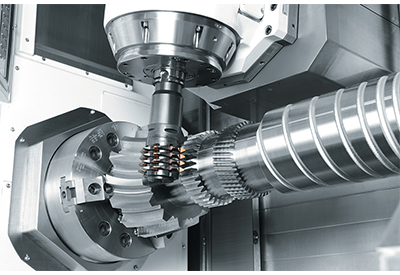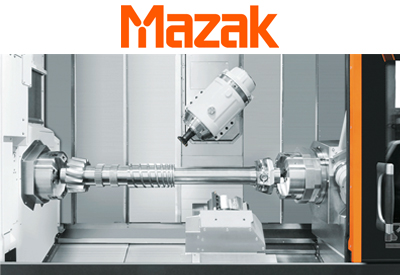Ten Worker Safety and Productivity Tips for 2020

February 18, 2020
By Steve Ludwig
It’s a new year, and a new decade (depending on whether you believe the decade begins with year zero or year 1), but manufacturing safety challenges keep expanding: digital transformation, fewer available workers, globalization, and how to manage safety and security risks among them.
We’re living in an era where technology is rapidly changing the safety landscape. We have access to more information than ever before, yet obtaining that information poses new risks. And, how we use this new information to understand why and where safety shutdowns occur and to improve safety and productivity, substantially changes the way we operate.
An evolving workforce, with younger, less experienced workers that often views risk differently, uses information differently, and has different expectations of their work environment than previous generations, pose new challenges to find, train, and retain.
As we enter 2020, we’ve compiled a list of 10 tips to help you meet these challenges and see immediate improvements in safety and productivity.
Focus on Improving Safety Maturity
Safety maturity as a combination of culture (behavior), compliance (policies and procedures), and use of capital (technologies). Repeated studies show the top 20 percent of manufacturers achieve 5 to 7 percent higher OEE, 2 to 4 percent less unscheduled downtime, and less than half the injury rate of average performers – and the top performers are extending their lead.
Best-in-class performers view safety as a key element in their pursuit of operational excellence. And they use contemporary safety methodologies to help achieve it. For example, an LNS Research survey found 75 percent of industrial companies said they have seen operational improvements resulting from the use of advanced safety technology. This explains why these companies have also stated that they’re willing to pay for more connected, smarter, and safer machines.
Safety maturity is evolution more than revolution. It’s progress in improving safety culture, procedures and processes, and use of technology to achieve higher productivity and safety. It’s recognizing that safety and productivity are not mutually exclusive, but complementary – and taking steps that improve both.
So how do you improve safety maturity? Begin by assessing your own safety maturity and find where improvements are needed to improve your goals. Understanding your performance level and areas for improvement is critical to optimizing safety.
Security Risks are Safety Risks
Too often, security is thought of as “an IT issue.” It’s not.
As industrial operations become more connected, attack surfaces inherently increase. Hackers are increasingly targeting industrial control systems, and a disgruntled employee with access can wreak havoc on your systems.
An over-pressurized pipeline, misaligned valves, or machinery unexpectedly changing operation poses safety risks to people, the environment, and your reputation.
Systems should undergo both safety and security assessments as part of any comprehensive risk management program. Safety professionals – EHS and Engineering – should collaborate with IT to ensure that physical asset risks are mitigated to help protect workers, equipment, and the intellectual property residing in industrial control systems. Unfortunately, the inherent safety implications of security risks are too often overlooked.
Improve Collaboration
Key to many critical business issues in safety, is taking a collaborative approach to safety.
EHS is most responsible for worker safety but only directly controls important but less-effective machinery safety methods – awareness, training, procedures, and personal protective equipment. Engineering focuses on technical standards yet has control of the most-effective machinery safety methods – designing out hazards, guarding, monitored access, and interlocks. Often, these two departments view each other suspiciously, resulting in reduced safety and productivity.
A key element of safety maturity, mentioned above, is collaboration between the two – along with Operations. In fact, a recent LNS research study found that organizations in which these three functions collaborate, experience a 15 percent lower median incident rate.
Perform Risk Assessments Early in the Design Process
The design process is critical to machinery that optimizes safety and productivity. Specifically, designing risks out of machinery, rather than building a machine and then trying to make it safer, is vital to these objectives.
While most companies perform a risk assessment at some point, the timing of the assessment is key. Is it early in the design process, when risks can be designed out? Or is it after the machine is designed, built, and ready to ship?
It’s vital to perform a risk assessment early in the design process and again after the machine is in place at its operating location to help verify compliance, safety, and productivity. Studies show that 60 to 70 percent of safety incidents occur outside of normal operating mode (during maintenance, repair, etc.).
Design Ergonomic Machinery
Our industry’s changing workforce is creating new safety considerations. Younger and inexperienced workers are at higher risk for acute injuries. Older workers are at higher risk for musculoskeletal and repetitive stress injuries, which can often be chronic or career ending. A more diverse workforce means that machinery must be adaptable to a range of workers.
Getting the most from every available worker now requires building machines for a broader range of workers. This means including ambidextrous features and reducing repetitive motion, lifting, and awkward placement of the body.
As the global workforce continues to evolve, contemporary safety systems and machinery design techniques must be considered, not only to mitigate risk but also to enhance worker productivity.
Use Alternative Measures to Reduce LOTO and Improve Productivity
Safety doesn’t have to come at the expense of productivity. Contemporary machinery design allows for minor service exceptions to lockout/tagout (LOTO) when procedures are routine, repetitive, and integral to the use of the equipment. This is critical to optimizing both safety and productivity.
When correctly used, alternative measures can improve productivity by reducing LOTO related downtime while still maintaining compliance. In some cases, alternative measures can be the difference between mere compliance and operational excellence.
Bring Safety into a Connected Enterprise
The power of the Industrial Internet of Things (IIoT) can substantially improve your safety compliance and performance.
Digital transformation empowers safety professionals with a real-time understanding of worker behaviors, machinery compliance, causes of safety shutdowns or stoppages, and safety anomalies and trends. It can also help improve your ability to hire, train, and retain employees.
Make Safety Integral to Your Control System
Your control system should include safety-rated inputs, logic, and output devices to mitigate risks, improve productivity, and provide information to key stakeholders.
Designing effective, productivity-enhancing safety systems can be challenging. But, safety design tools can streamline development and help confirm and document compliance.
For example, RASWin software can help manage and consistently document the safety lifecycle. Safety Automation Builder® software can help you design your safety system.
Safety function documents also can help you implement machinery safety functions and include safety-performance calculations, wiring, programming, verification, and validation.
The Safety Automation Builder software tool is now integrated with risk assessment software RASWin to help guide engineers through steps of the machinery safety lifecycle within one environment, providing documentation to show compliance with international standards.
Implement Smart Safety Systems
New smart-safety designs and devices can reduce your wiring, design costs, and unscheduled downtime. For example, you can capture smart-device interactions to create predictive maintenance feedback and other information.
Smart systems involve every layer – from smart sensing, safety and motor control devices that predict their own maintenance, to flexible control systems that optimize safety, help protect intellectual property, improve operations, and provide information to analytic systems that provide insights that help leaders make decisions and plot the right course for their organization.
Smart systems help control machine access to authorized and trained personnel to improve productivity, safety, and security.
Smart systems involve every layer.
Build Your Safety Expertise
You need engineers, system integrators, and machine builders with expertise in current safety standards, a proven track record in building safety systems, and knowledge of productivity-enhancing safety system design processes and technologies.
If you don’t have this expertise in-house, turn to your partners. Rockwell Automation employs nearly half of all TÜV Rheinland-certified safety professionals.
Our alliances include recognized system integrators and solution partners with safety expertise. These organizations have met stringent requirements, including a rigorous, months-long assessment and education process to become members of our PartnerNetwork™ program. Read more on the Rockwell Automation® Safety System Integrator program.






